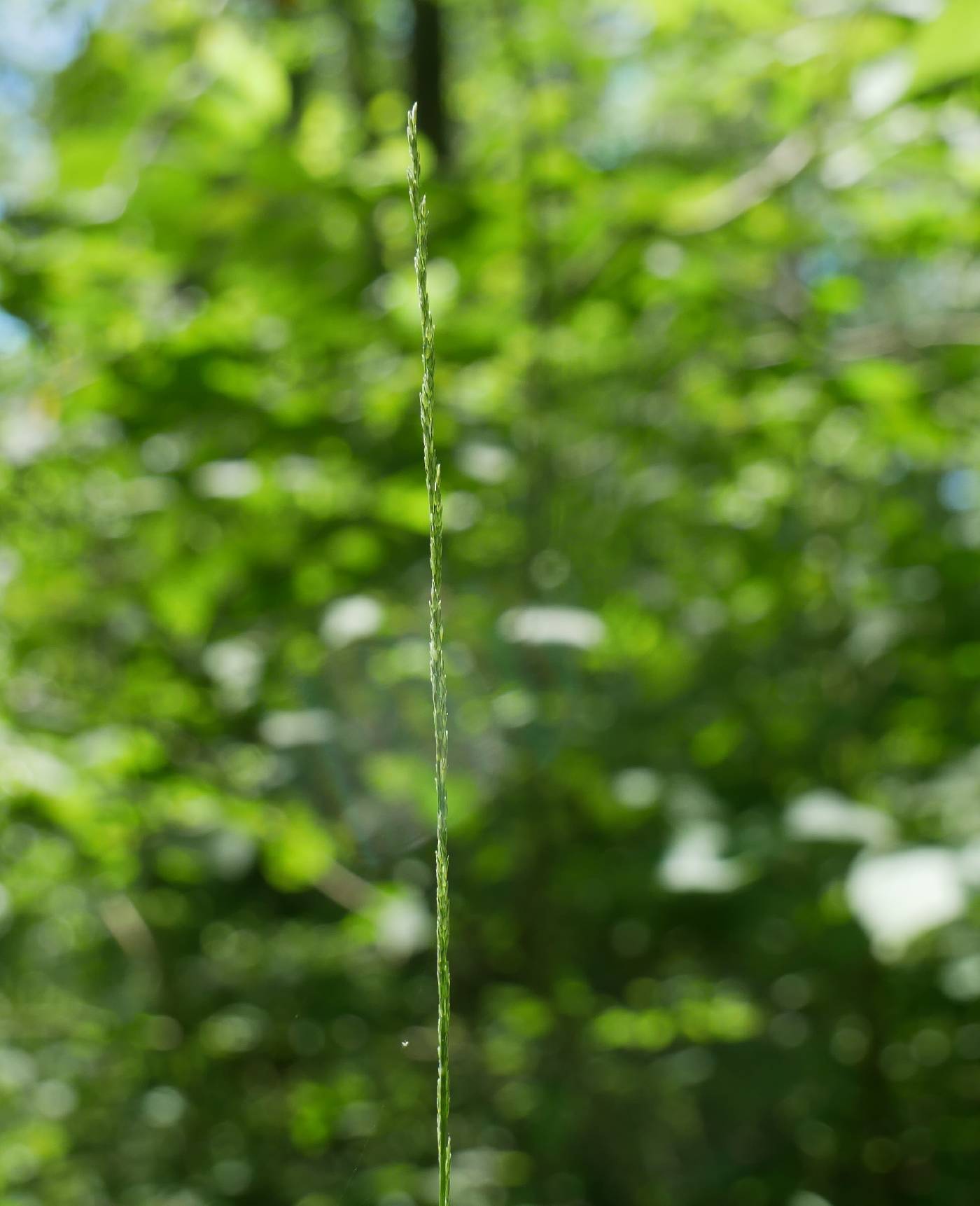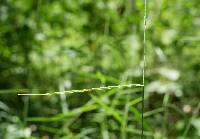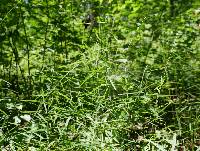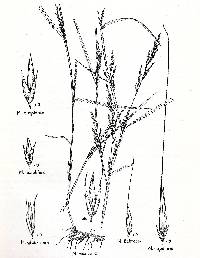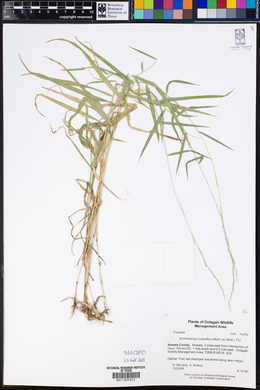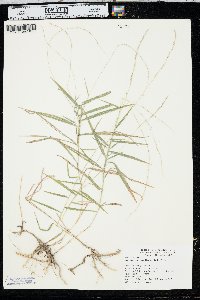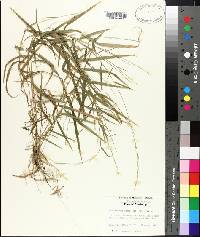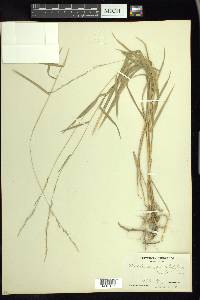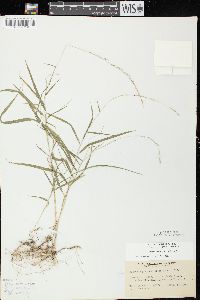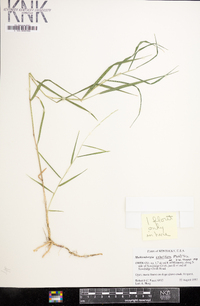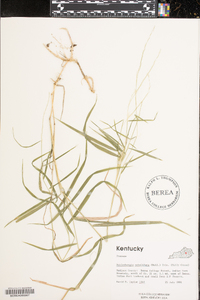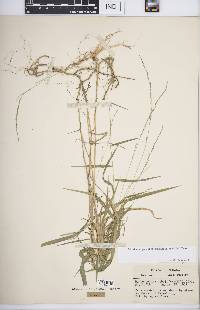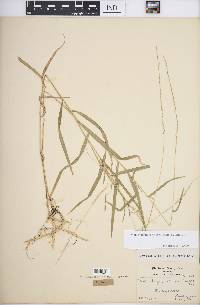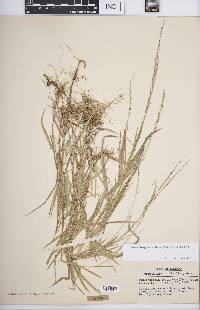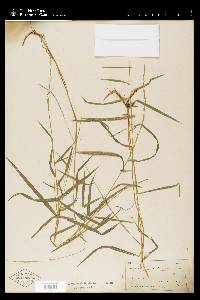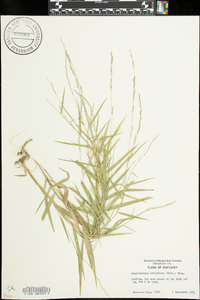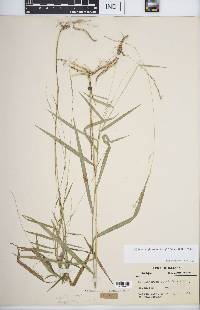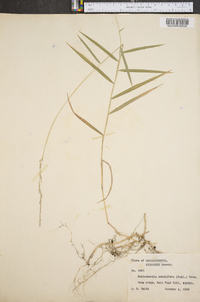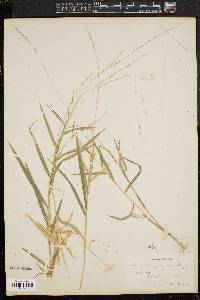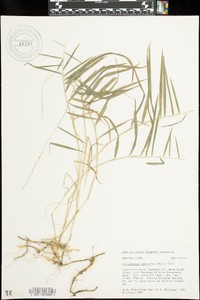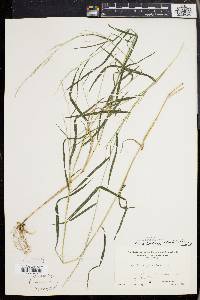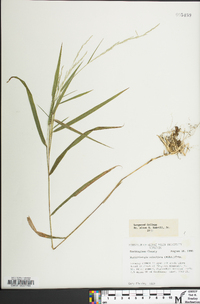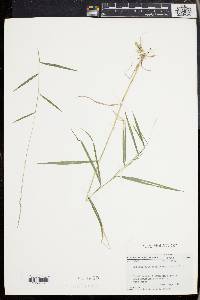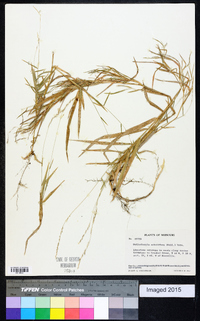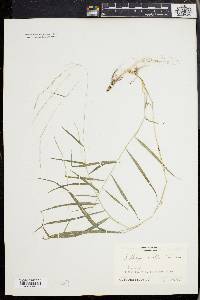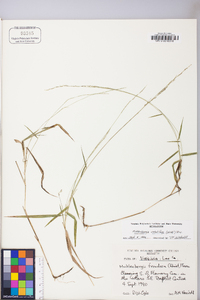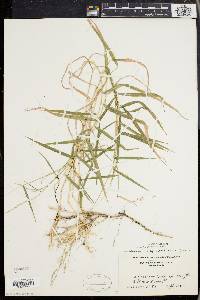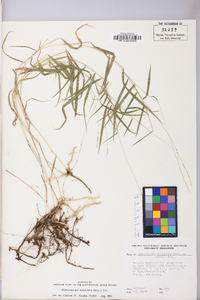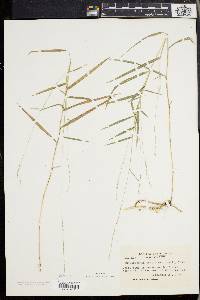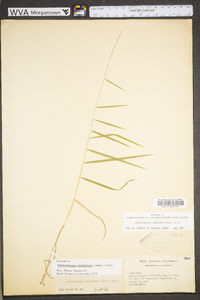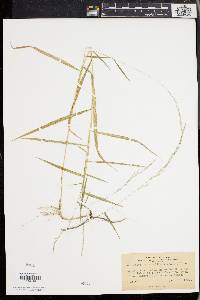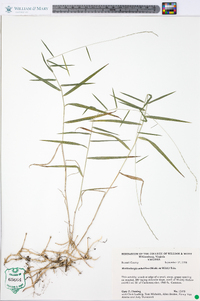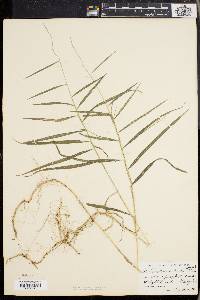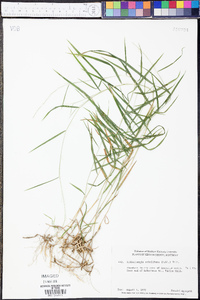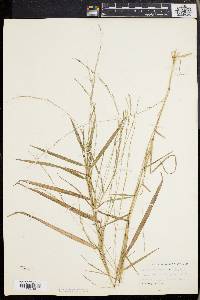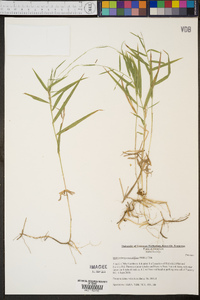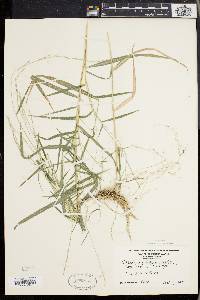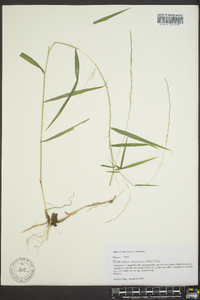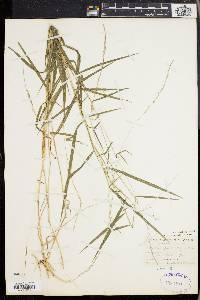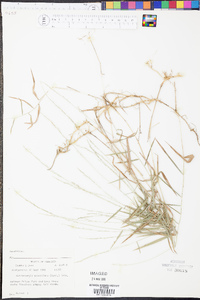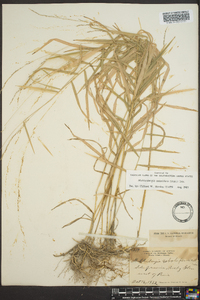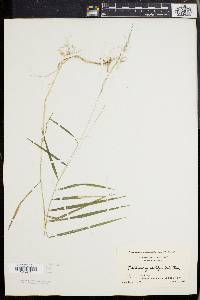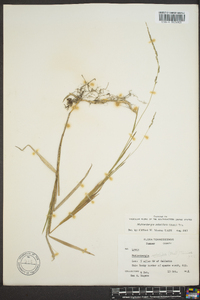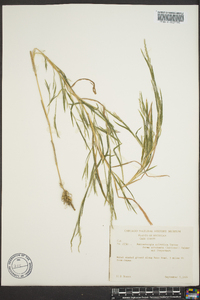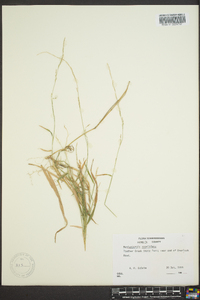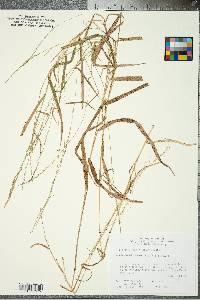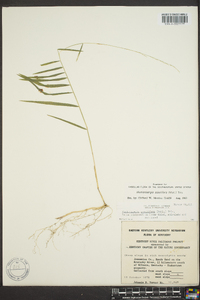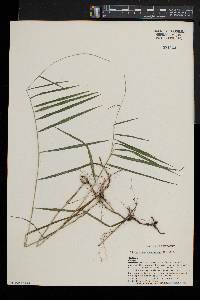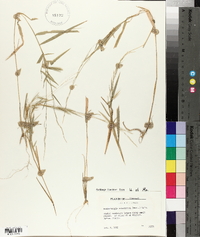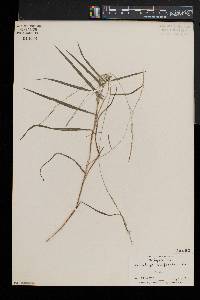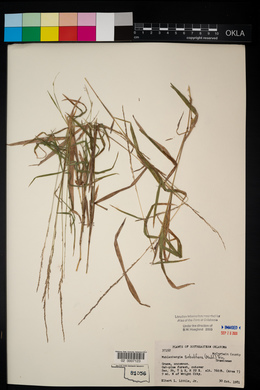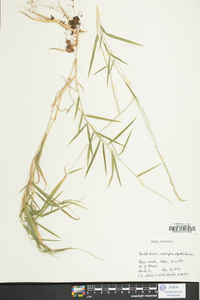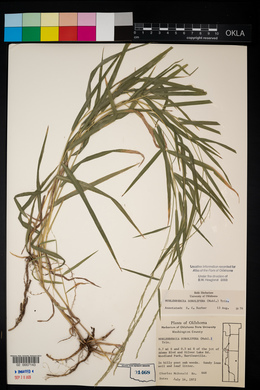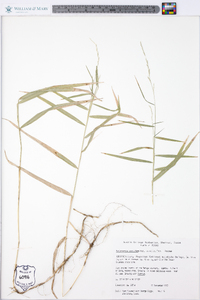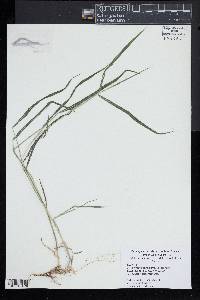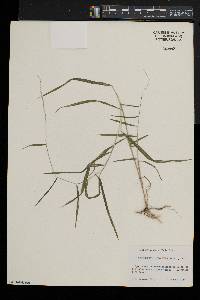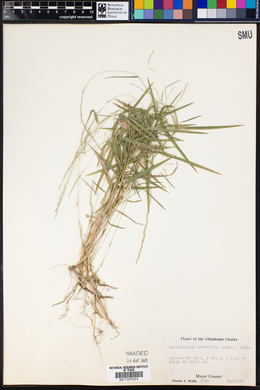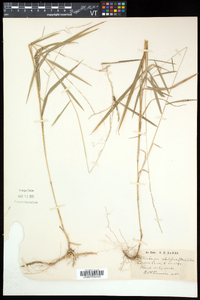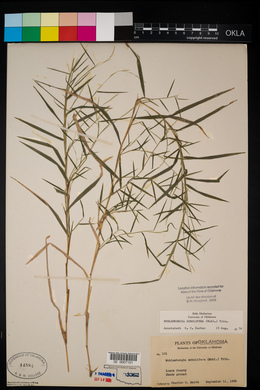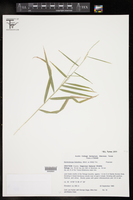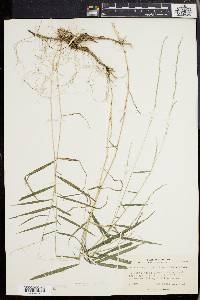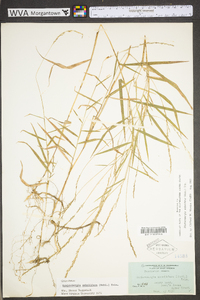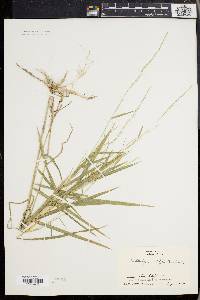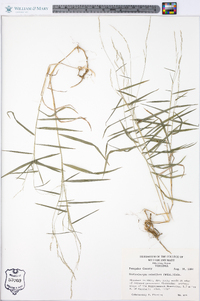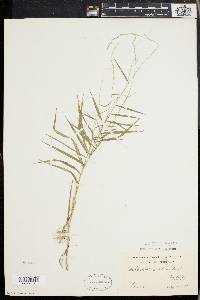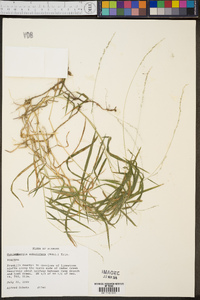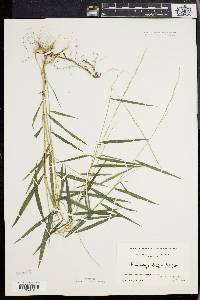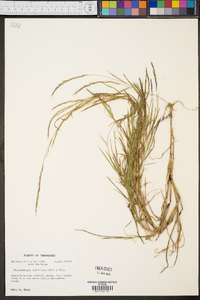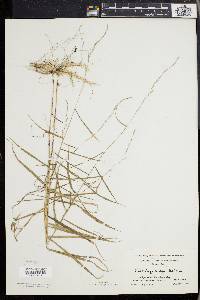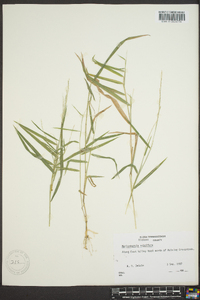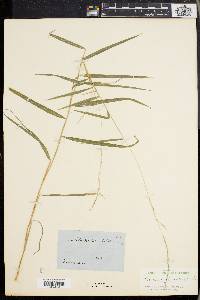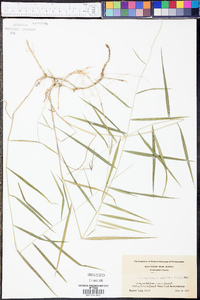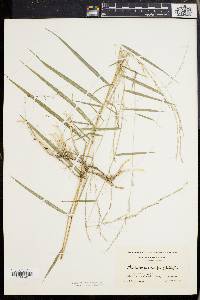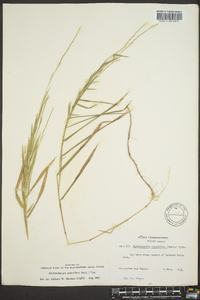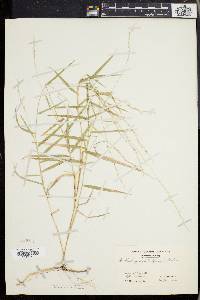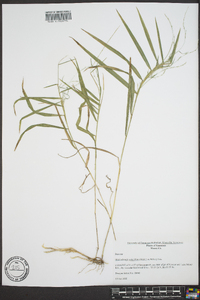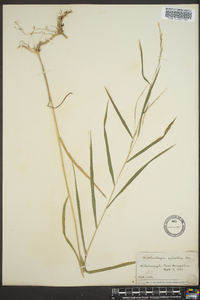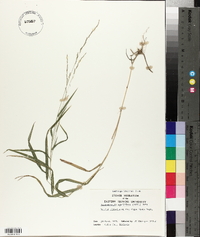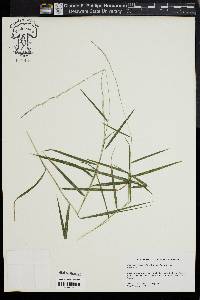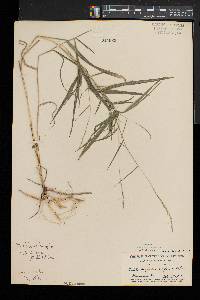
|
|
|
|
Family: Poaceae
Rock Muhly
[Achnatherum soboliferum (Muhl. ex Willd.) P. Beauv., moreAgrostis sobolifera Muhl. ex Willd., Cinna sobolifera (Muhl. ex Willd.) Link, Muhlenbergia sobolifera f. setigera (Scribn.) Deam, Muhlenbergia sobolifera f. sobolifera (Muhl. ex Willd.) Trin., Muhlenbergia sobolifera subsp. setigera , Muhlenbergia sobolifera subsp. sobolifera (Muhl. ex Willd.) Trin., Muhlenbergia sobolifera var. setigera , Muhlenbergia sobolifera var. sobolifera (Muhl. ex Willd.) Trin.] |
Plants perennial; rhizomatous, usually not cespitose. Culms 25-95 cm tall, 0.8-1.5 mm thick, erect or ascending; internodes smooth, shiny, and glabrous for most of their length, scabridulous immediately below the nodes. Sheaths glabrous, margins hyaline; ligules 0.3-1 mm, membranous, truncate, ciliolate; blades 4-16 cm long, 2-7 mm wide, flat, glabrous, usually smooth, occasionally scabridulous. Panicles 4-18 cm long, 0.2-0.8 cm wide, narrow, usually exserted; axillary panicles usually exserted, sometimes partially included in the subtending sheath; primary branches 0.6-4 cm, ascending to appressed; pedicels 0.3-1.6 mm, strigose. Spikelets 1.6-3 mm, erect, overlapping the next spikelet on the branch by 1/2 its length. Glumes equal to subequal, 1-2.5 mm, much shorter than the florets, scabridulous (particularly over the veins), 1-veined, narrowing from above the broad, overlapping bases to the acute apices, unawned or awned, awns to 1 mm; lemmas 1.6-2.8 mm, lanceolate, hairy on the calluses, lower 1/2 of the midveins, and margins, hairs 0.3-0.5 mm, apices acuminate, unawned or awned, awns to 1 mm; paleas 1.6-2.9 mm, lanceolate, basal 1/2 with hairs shorter than 1. 5 mm, apices scabridulous, acuminate; anthers 0.4-1 mm, yellow. Caryopses 1-1.5 mm, fusiform, brown. 2n = 40. Muhlenbergia sobolifera grows in dry upland forests, oak woodlands, and on rock outcrops of sandstone, chert, or limestone formations, at elevations of 0-1200 m. It is restricted to the Flora region. Perennial rhizome-bearing herb 25 cm - 1.13 m tall Leaves: having hairless, open, transparent-margined sheaths and 0.3 - 1 mm long, flat-topped, membranous ligules that are lined with hairs along the margins. The blades are 4 - 16 cm long, 2 - 7 mm wide, flat, hairless, and usually smooth but sometimes minutely rough. Inflorescence: terminal, spike-like and branched (panicle), 4 - 18 cm long, 0.2 - 0.8 cm wide, with ascending to appressed primary branches 0.6 - 4 cm long, and the base of axillary inflorescences occasionally surrounded by the sheath. Fruit: a brown, spindle-shaped caryopsis, 1 - 1.5 mm long. Culm: 25 cm - 0.95 m long, erect to ascending, 0.8 - 1.5 mm wide, the internodes minutely rough just below nodes but shiny and hairless elsewhere. Spikelets: borne on appressed-hairy stalks 0.3 - 1.6 mm long, erect, 1.6 - 3 mm long, overlapping half the length of the spikelet above it. Glumes: equal or nearly so, 1 - 2.5 mm long, egg-shaped with a broad base and pointed tip, sometimes terminating in an awn to 1 mm long, single-veined, minutely rough. Florets: with yellow anthers 0.4 - 1 mm long. Lemma: 1.6 - 2.8 mm long, lance-shaped with a pointed tip, sometimes terminating in an awn to 1 mm long, three-veined, with hairs 0.3 - 0.5 mm long along the bottom half of the midvein and along the margins. Palea: 1.6 - 2.9 mm long, lance-shaped with a minutely rough and pointed tip, two-veined, with hairs less than 1.5 mm long on the lower half. Similar species: The following species also have shiny, mostly hairless culms. The glumes of Muhlenbergia schreberi are missing or minute, and those of Muhlenbergia x curtisetosa are unequal and sometimes awned. Muhlenbergia racemosa has awned, narrow, 3 - 8 mm long glumes that are much longer than the lemmas and end in a minutely rough awn. The narrow, 1.4 - 2 mm long, sometimes awned glumes of Muhlenbergia bushii are shorter than the lemmas, and the ligules are 0.2 - 0.6 mm long. Muhlenbergia frondosa has narrow, 2 - 4 mm long, sometimes awned glumes that are shorter than to slightly longer than the lemmas, 0.7 - 1.7 mm long ligules, and 1.6 - 1.9 mm long caryopses. Muhlenbergia glabrifloris has 1.5 - 3.5 mm long, sometimes awned glumes that are shorter than or slightly longer than the lemmas, 0.5 - 1.5 mm long ligules, and 1.2 - 1.4 mm caryposes. Flowering: July to October Habitat and ecology: Rare in dry woods. Occurence in the Chicago region: native Etymology: Muhlenbergia is named after American botanist, Gotthilf Henry Ernest Muhlenberg (1753-1815). Sobolifera means sprout-bearing. Author: The Morton Arboretum Vigorously rhizomatous; culms arising singly or few together, erect, becoming much branched, the internodes glabrous; sheaths glabrous, frequently overlapping; blades stiff, 4-16 cm נ2-7 mm; ligule membranous, 0.5-1 mm, infls terminal or some on erect leafy lateral branches, included at base or more often exsert on slender erect peduncles to 11 cm; panicles very slender, arcuate, 5-15 cm נ2-4 mm, with short erect branches; spikelets whitish; glumes subequal, 1.3-2(-2.5) mm, shorter than the lemma, the margins usually sigmoid-curved; lemma 1.8-2.5 mm, awnless or with an awn-tip to 4 mm, the callus scantily bearded; anthers 0.4-0.8 mm; 2n=40. Dry upland woods or rocky outcrops; Mass. to Va., w. to Wis., Nebr. and Tex. (M. setigera, the awned, mainly western form) Gleason, Henry A. & Cronquist, Arthur J. 1991. Manual of vascular plants of northeastern United States and adjacent Canada. lxxv + 910 pp. ©The New York Botanical Garden. All rights reserved. Used by permission. From Flora of Indiana (1940) by Charles C. Deam This species is found principally in the southern half of the state. It is strictly a woodland species and occurs on wooded slopes, preferring those along streams. It is found in both beech and sugar maple, and black and white oak woodland. …… Indiana Coefficient of Conservatism: C = 5 Wetland Indicator Status: N/A |

